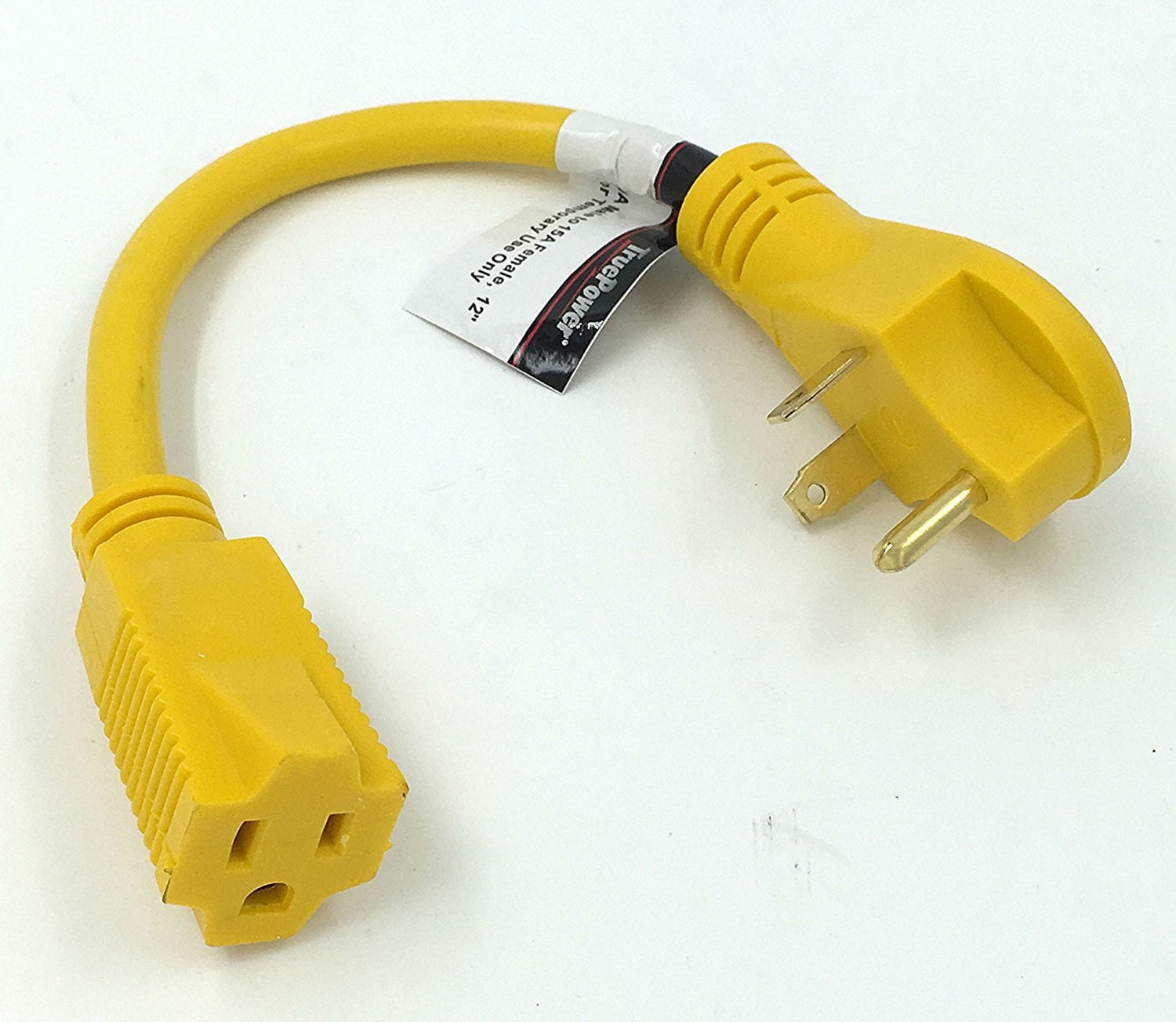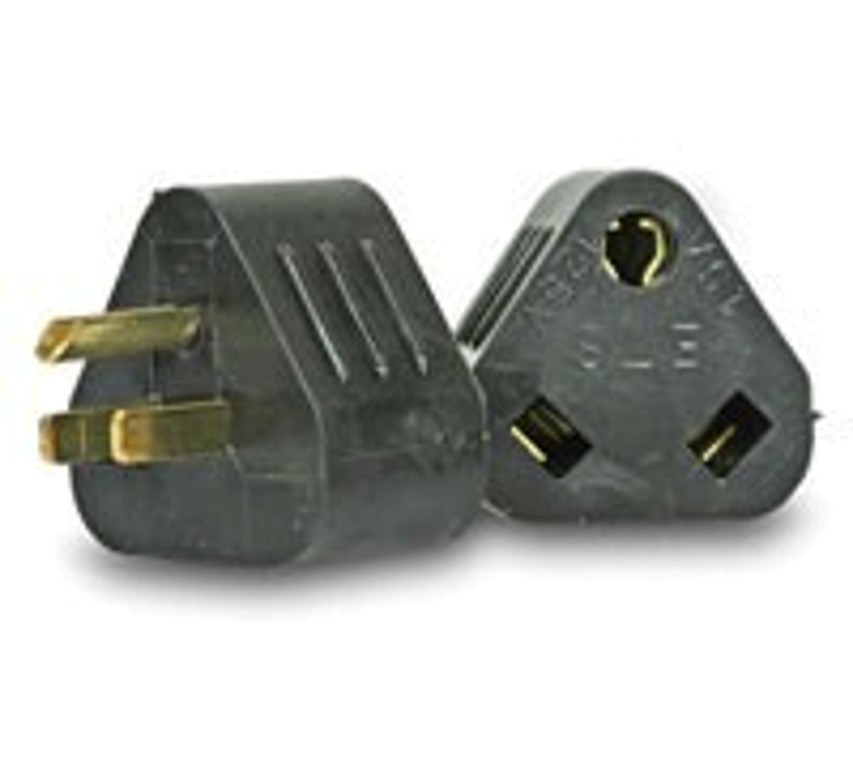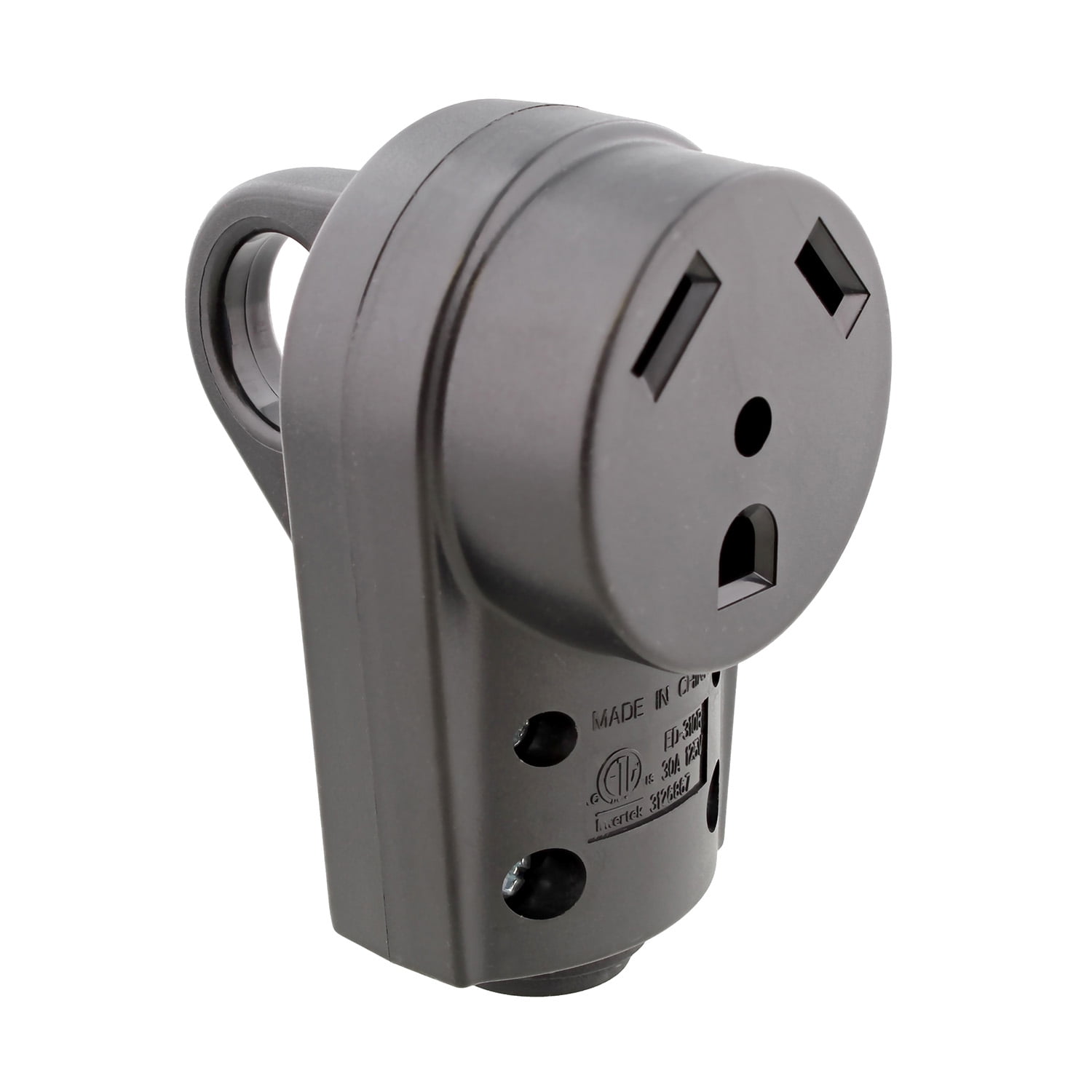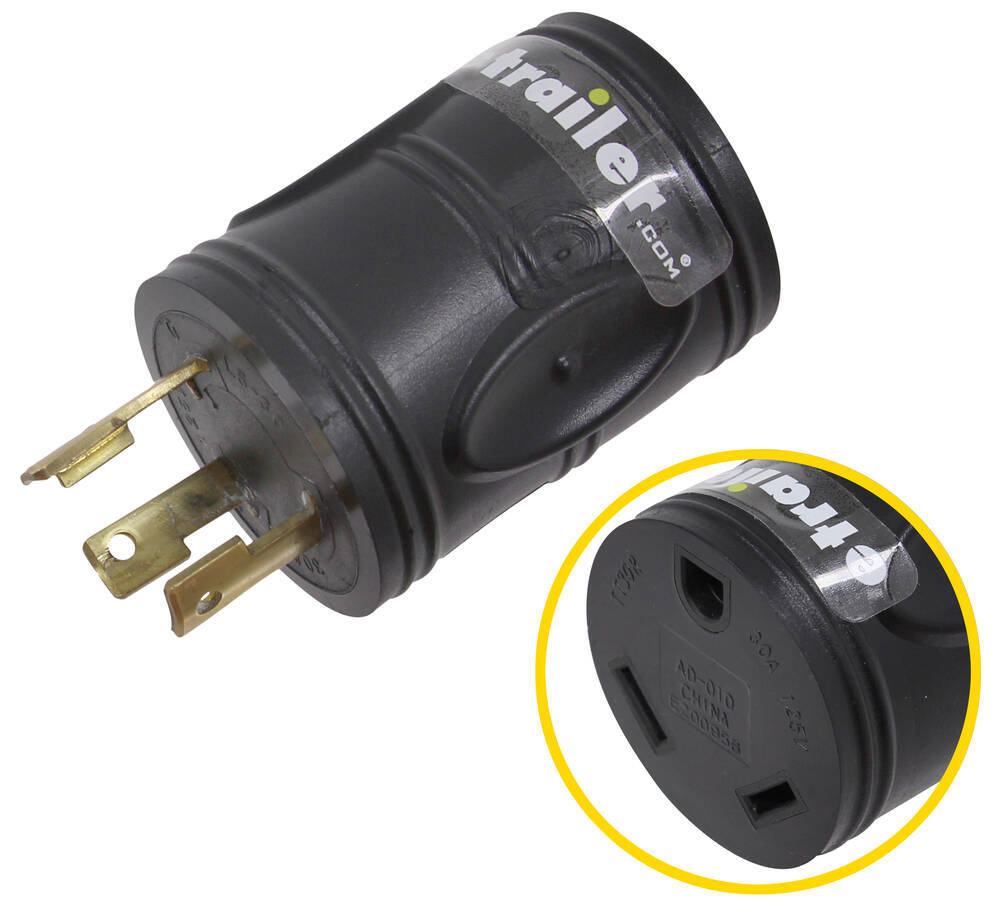


You can get this type of a setup going from a 50 amp power source to a 30 amp RV plug and a 15 amp household plug, but not the other way around. No manufacturer in their right mind would put out a product capable of this. In other words, you would be asking a 30 amp power source to supply up to 65 amps of power (50 amp + 15 amp). To ask the 30 amp power source to additionally supply a potential 15 amps of power (the standard household outlet that you want to run porch lights from) would mean a further potential power deficit. You are asking a 30amp power source to supply power to a 50 amp rig, so you are already running a potential power deficit. Not that I’m aware of and here’s my take on why. The Conntek looks like it would be difficult as well. With the original plug I also had a terrible time disconnecting it. I’ve looked at Home Depot, Lowes, Amazon, and internet searching and the one that looks promising is the Conntek 30 amp. The hatch is 2″ deep, 2.7″ ID and the hole in the side of the trailer is 3″. The cord end must have flipped up and caught on the folded stair pretty quickly after the end sheared off as there is very little wear on the cable. At some point on our return home yesterday on a 240 mile trip, the cord wiggled out and the connector sheared right off. Upon returning home, I found the cord without a connector stuck on the folded stair with about 4 ft of cable protruding. The hatch lid had broken off years ago and the cord always stayed put…. The mini did not quite fit all the way into the hatch, the slight protrusion seemed ok. I replaced it with the Camco mini to ease unplugging. The plug pulled apart from the sheathing exposing the individual wires. The original plug looked like the one “Kelly” had in this article. Additionally, you will need a thick and appropriate-sized extension cord capable of handling the high voltage required by the RV.I have a living quarters horse trailer. To plug a 50 amp RV into a house electrical system, you will need an adapter that can fit the three or four prongs of the RV plug into a standard 110-volt outlet. What do I need to plug my 50 amp RV into my house? It's also important to ensure that the extension cord used is properly sized and capable of handling the required voltage. However, you will need a 30/50 amp and a 15/20 amp adapter to connect the RV plug to the house outlet. While it's not recommended for extended trips, you can plug a 30 amp RV into a house electrical system for a short amount of time. Can you plug a 30 amp RV into a house outlet? It's important to consider the power requirements and avoid overloading the circuit breaker.

However, it will consume a significant amount of electricity, potentially limiting the use of other devices. Yes, you can run a 30 amp RV air conditioner on a 110-volt outlet. Can you run a 30 amp RV AC on a 110 outlet?

Running a 50 amp RV on a 30 amp socket may limit the power available to the RV. However, it's important to monitor the power usage and not exceed 3,600 watts or 30 amps. It is possible to run a 50 amp RV on a 30 amp socket with the use of an adapter. On the other hand, a 50 amp RV plug has four prongs and is required for a 220-volt circuit. It has three prongs, which are compatible with a 110-volt power source. Is a 30 amp RV plug 110 or 220?Ī 30 amp RV plug is designed to work on a 110-volt circuit. It's important to note that even with an adapter, a 30 amp RV plug won't receive more power than it can handle. A 50 amp RV plug can provide a maximum of 12,000 watts, while a 30 amp RV plug can handle up to 3,600 watts. The main difference between 30 amp and 50 amp RV plugs is the amount of power they can handle. What is the difference between 30 amp and 50 amp RV plugs?


 0 kommentar(er)
0 kommentar(er)
